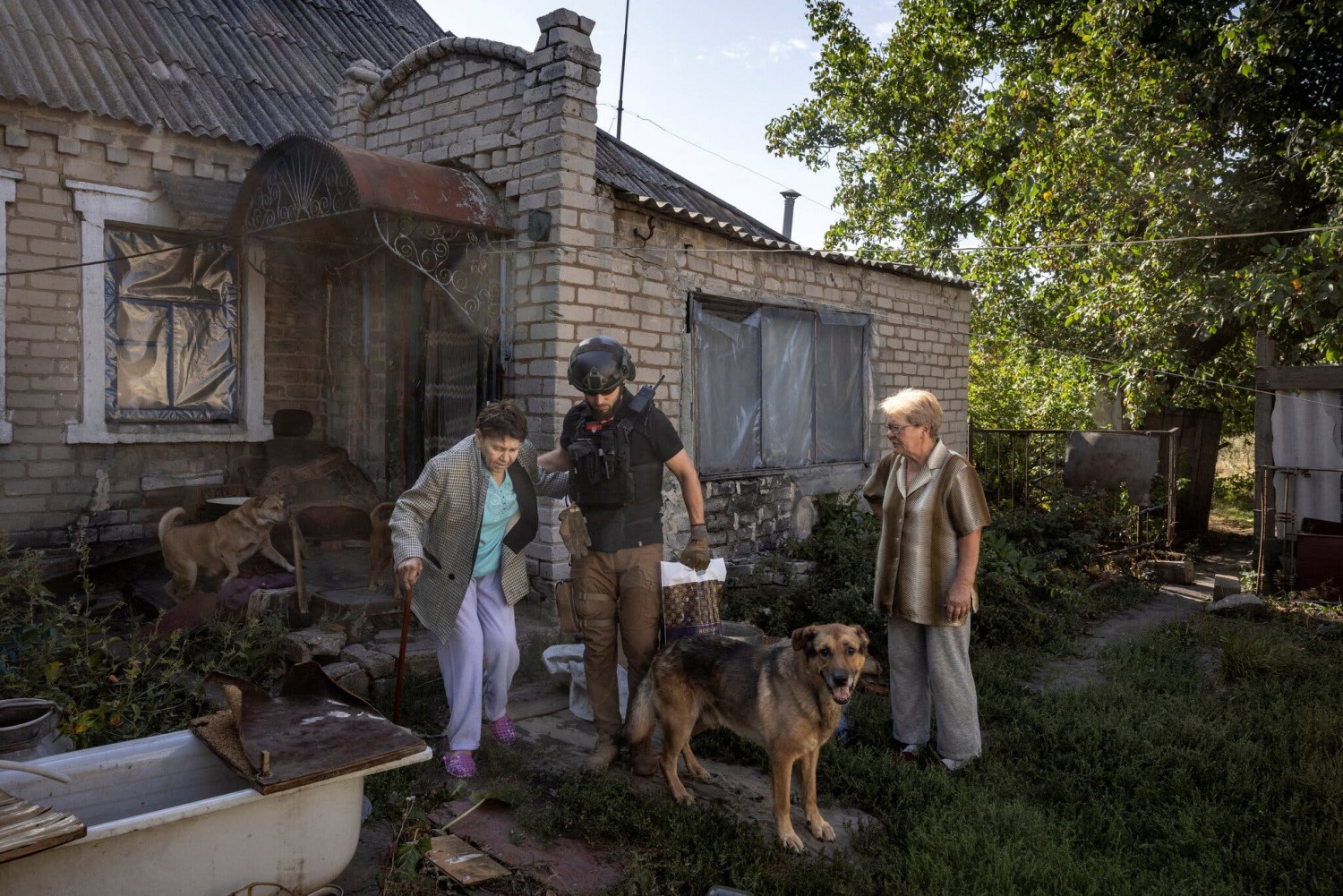
The Ukrainians must defend a critical front in their country’s east, including the city of Pokrovsk, while trying to press forward in western Russia.
More than two weeks into its surprise offensive in western Russia, Ukraine’s advance has slowed, with its troops making only marginal gains around territory they already control.
But more than 200 miles to the southeast, another offensive is gaining momentum: Russia’s drive toward Pokrovsk, a stronghold in Ukraine’s eastern Donetsk region. In recent days, Moscow’s troops have seized at least three settlements and reached the outskirts of a town along a railroad to Pokrovsk, a logistics hub for the Ukrainian Army in the region.
The Russian advance has put the Ukrainians in the precarious position of defending one critical front while attempting to press forward on another, all with limited troop numbers and weaponry. President Volodymyr Zelensky said this week that Ukraine was working on boosting its forces in the east with more men and weapons to resist the Russian advance.
Here’s a look at the overall situation on the battlefield.
Russia pushes toward Pokrovsk
This week, Russian forces have captured three more villages near Pokrovsk, according to DeepState, an analytical group with close ties to the Ukrainian Army, expanding their hold on the area. Moscow’s troops are now about eight miles from the center of Pokrovsk.“They’re now within artillery range of the city,” Michael Kofman, a senior fellow in the Russia and Eurasia program at the Carnegie Endowment for International Peace, told the military podcast War on the Rocks on Wednesday.
Pokrovsk, a city of more than 40,000 inhabitants, is a transit hub for Ukrainian forces in the east. It sits on a key road, Highway T054, linking several cities that form a defensive arc protecting the part of the Donetsk region that is still held by Ukraine.
“The loss of Pokrovsk would be fairly significant to Ukraine’s ability to maintain defenses overall in Donetsk,” Mr. Kofman said. “Its loss wouldn’t be disastrous but it would have downstream effects for the overall organization of defense.”

A map of the battlefield produced by the Finland-based Black Bird Group, which tracks developments in the conflict, appears to indicate that Russian troops have approached the final line of Ukrainian anti-tank ditches and trenches near the town. They have already breached several defensive layers during their advance, the Black Bird Group said, although these were less densely fortified.
Local Ukrainian authorities have called on Pokrovsk’s residents to evacuate within the next two weeks, before conditions worsen significantly. Families with children have already been ordered to leave. But Serhii Dobriak, the head of Pokrovsk’s military administration, reported that the evacuation pace was not fast enough, with only 500 to 600 people departing daily, though the authorities could bring out at least 1,000 a day.
“People don’t want to evacuate,” Volodymyr Nikulin, a police officer in Pokrovsk, said in a text message. “This is not a surprise. People in these cities used to live in war since 2014. They’ve experienced so many war atrocities. They just hope to survive.”
Niu-York is in peril
To the northeast of Pokrovsk, around the towns of Toretsk and Niu-York, Russian forces have been slowly but steadily gaining ground, sending waves of troops in bloody attacks.
Footage geolocated by the Institute for the Study of War, a Washington-based think tank, shows Moscow’s troops are on the doorstep of Toretsk and now control most of Niu-York, which took its name in the 19th century and is sometimes referred to as New York. A medic from a brigade fighting near Niu-York, speaking on condition of anonymity for security reasons, said this week that Ukrainian soldiers still controlled a small part of the town but were under relentless attacks.
Ukrainian positions in Niu-York and Toretsk protect another city in the defensive arc: Kostiantynivka, about nine miles to the northwest.
Analysts say one aim of Ukraine’s offensive into western Russia has been to force Moscow to divert troops from the eastern front lines. But the Kremlin appears to have largely resisted such a redeployment so far, prioritizing its military effort in the east.
“The Russians have hardly moved any forces from here,” Maksym Zhorin, the deputy commander of the Third Separate Assault Brigade, which is fighting in the east, told Ukrainian media on Wednesday. The Ukrainian offensive in Russia has had little impact on the fighting in the Donetsk region, he said.
Ukraine’s advance in Russia slows
Ukrainian troops made quick gains after they launched their surprise cross-border offensive into Russia’s western Kursk region on Aug. 6, capturing many settlements and the town of Sudzha.
Mr. Zelensky, who said on Thursday that he had visited the Ukrainian side of the border area where his army attacked, has claimed that Ukraine now controls about 480 square miles of Russian territory. If confirmed, that’s roughly the amount of land that Russian forces seized in Ukraine this year up to July, according to the Institute for the Study of War.

But most of these gains were made in the first week of the offensive. Over the past week, Ukraine has only marginally advanced around the bulge of territory it seized, pushing into a few villages.
Analysts say this is because the Ukrainian forces are coming up against reinforcements that Moscow has sent to the area, mainly from units stationed in Russia. Vasyl Halamai, a Ukrainian platoon commander, told Ukrainian television that Russian forces were “significantly increasing artillery fire and the resistance of infantry units has increased.”
Materiel losses for Ukraine in the assault are also mounting. Naalsio, an open-source intelligence researcher analyzing combat footage, said on Wednesday that Ukraine had lost at least 65 pieces of military equipment, including four U.S.-made Stryker armored vehicles, compared with 40 such losses for the Russians.
Constant Méheut reports on the war in Ukraine, including battlefield developments, attacks on civilian centers and how the war is affecting its people. More about Constant Méheut